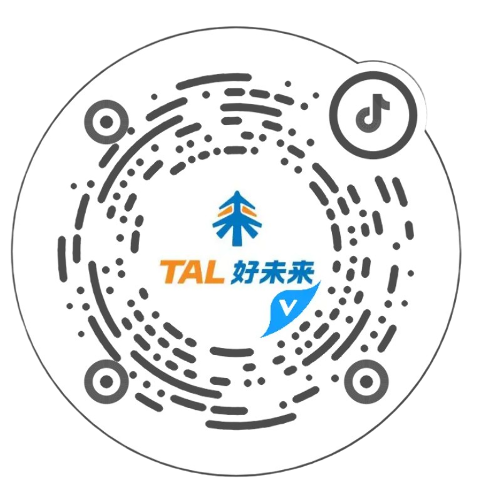




Some people say that the prosperity of a country is achieved in the classroom of the elementary school, and the significance of basic education is obvious. At the critical moment of poverty alleviation, some impoverished counties have a clearer understanding of the importance of focusing on intelligence in poverty alleviation. The informatization of education brings imagination to "supporting intelligence." Can educational information technology solve the problem of difficult realization of education fairness and the lack of talent in poor areas? Song County Siyuan Experimental School, a "poverty alleviation school" in a depth of poverty-stricken county, has given us some enlightenment from its exploration in the past two or three years. Although this exploration process is complex, difficult, and long, it is more full of hope...
—— Preface
After driving for more than an hour from Luoyang, we arrived in Song county, Henan province.
This is a national poverty-stricken county, located in the Qinba Mountain area, one of the 14 contiguous poverty-stricken areas in the country, with 95% of the area being mountainous. At the end of December 2018, there were still 40 impoverished villages in the county, with 7719 impoverished households.
Song County Siyuan Experimental School was built on a vacant piece of land on the outskirts three years ago. Looking around, the modern teaching building, standard soccer field, and fully functional multimedia classroom... are impressive.
Song County Siyuan Experimental School's morning exercises between classes
But Principal Zhang Qingmin was once very anxious. Among the 3153 students in the school, 35.56% were from poor families and left-behind children from rural areas. More than half of the teaching staff were from rural areas, and many people came to Siyuan mainly to move to the city. Regardless of the teachers' capabilities, or the students' foundations were generally weak. However, the school looked very beautiful, and society had very high expectations for Siyuan School, and they themselves did not allow it to fail.
"We must cultivate these children into talents, so that their families can be completely lifted out of poverty, and we can interrupt the intergenerational transmission of poverty," Zhang Qingmin exerted his strength, wanting Siyuan School to catch up.
Where does the road lead
Let's go back to two years ago. On September 1, 2016, Song County Siyuan Experimental School was established. This is the largest "poverty alleviation school" in the local area, mainly for poor families and rural left-behind children. It is a boarding school for nine-year compulsory education. The school is funded by the government and donated by the Hong Kong Yen Ai Foundation.
In the early days of Siyuan's establishment, due to the fact that many students grew up without their parents around, their self-discipline and behavioral habits were very poor, so Zhang Qingmin mobilized the entire staff for management. The teachers were not only busy with teaching but also managing students: checking the dormitories at night, and urging them to get up and do housework in the morning.
One year later, the students' behavior and thinking changed greatly, so Zhang Qingmin decided to focus most of his energy on teaching. At that time, the school's teaching quality was at the bottom compared to similar schools in the county seat.
Zhang Qingmin was very anxious and started seeking advice from all quarters.
One summer vacation, he drove a minivan with more than ten main teachers from the school, starting from Song County and traveling to Shandong, Anhui, Jiangsu, Shanghai, and other places to learn. They conducted interviews during the day, wrote summaries at night, accumulated a lot of experience after thousands of miles of travel. This also continuously confirmed his point: people are the primary productive force. Without excellent teachers, even the best hardware cannot produce outstanding students.
Having worked in township schools for nearly 30 years, Zhang Qingmin has a deep understanding of this. Many years ago, the township middle school where he was located was still a mud house, but the teachers there were very dedicated, and the students' performance was good. Later, as the government gradually increased investment in education, the school's teaching buildings improved, and the hardware became better. However, several teachers went to the county seat, and the school's teaching quality immediately fell, and it has not recovered to this day.
As he walked through the middle schools in big cities, he felt a huge gap. Like many rural education workers, changing the local backward education is their wish. The rise of smart education over the past two years has attracted Zhang Qingmin's attention.
He has been in contact with some institutions engaged in smart education and learned that students use tablets for their lessons, the classroom can be interactive, and the learning efficiency is relatively high. However, many years of experience have taught him that information technology is indeed important, but more importantly, we need to cultivate enough good teachers and make them stay rooted, in order to fundamentally solve the educational problems in remote areas.
In the spring of 2017, when Yen Ai Foundation introduced Good Future to him, Zhang Qingmin didn’t have much confidence in it. It was not until Yen Ai said that the smart education solutions provided by this company could help the teachers at Siyuan School grow that he became enthusiastic.
The intention to introduce smart education quickly gained the support of Zhang Songbin, the director of the Song County Education Bureau. Zhang Songbin hoped that through quality teacher-to-teacher face-to-face training, Siyuan’s own outstanding teachers could be cultivated, gradually transitioning from “blood transfusions” to “hematopoiesis.”
At the beginning of the cooperation with the company, Zhang Songbin also had concerns. He did not know whether the educational philosophy, teaching methods, and information technology methods of a well-known educational company were suitable for the teachers and students at a deep poverty-stricken county school.
Adjustment Process
Serving a public school in a deep poverty-stricken county for the first time brought great pressure to Good Future. After much consideration, they decided to have two teachers stationed at Siyuan School.
After a period of research, the two sides decided to start from two aspects: first, through collective teaching research, collective lesson preparation, and one-on-one teaching polishing, to improve the internal and external skills of teachers; and second, to improve the teachers' level of information technology through the application of the smart platform in teaching.
Teachers' collective lesson preparation and polishing
External skills mainly focus on standardizing blackboards, expressive ability, and enthusiastic interaction capabilities. Internal skills consist of logical analysis of the knowledge system.
At first, some teachers at Siyuan School resisted. Zhang Junyu, with 19 years of teaching experience, admitted that she was a bit disdainful at the time, "I can recite the middle school mathematics curriculum fluently. My students are all already parents, and yet I’m asked to re-prepare the lessons from scratch..."
However, she quickly changed her mind. After teachers from the training provided them guidance on delving into the content of the textbooks, she was asked to write personalized lesson plans. Unexpectedly, even after many attempts, "the quality of the first draft was low and was ruined; the second draft was not down-to-earth and was ruined; the third draft had poor form, and was ruined...” Zhang Junyu realized that a good lesson plan is refined through continuous polishing.
Not every part was accepted. Some theories and practices did not improve the training effect of the publicly funded teachers who already had a good foundation. Therefore, the training teacher changed the approach - they no longer taught what the teachers already knew or were proficient in; they instead focused on areas the teachers hadn't studied or were weak in, such as expressive capabilities.
Compared to external skills, the internal skills challenge was greater. At the beginning, Good Future chose a group of top teachers from Beijing and Shanghai to explain the knowledge system to the local teachers. But even if they taught the same curriculum, some teachers with a weak foundation still couldn’t grasp the content. After some trial and error for several months, Yang Haigeng, the person in charge of teacher training at Good Future, decided to transfer teachers from Zhengzhou, the same province as Song County, to provide support. With similar regional backgrounds, the teachers from the Zhengzhou branch school found it easier to make the local teachers understand.
"Over the past year, I have gained the most from internal skills, and all my knowledge has been systematized," Zhou Xiaona, a middle school physics teacher at Siyuan School, found. Now when she encounters new knowledge, she naturally assimilates it and makes it her own.
This has also changed her teaching style. In the past, she usually lectured for 30 minutes straight, and then had her students do exercises. Now before class, she will outline the basic framework for the students, similar to a mind map, and then explain it to them step by step. After the explanation, a summary is given, followed by practice for consolidation.
At Siyuan, Cui Yongliang saw a different state of mind. In September 2018, he rushed from Beijing to Song County to provide external skills training to the teachers at Siyuan. In the short three-day training, the teachers wrote tens of thousands of thoughts and insights.
Insights from the teacher training
Through the words on the page, Cui Yongliang felt all the passion hidden under the shy surface of the teachers and their desire for resources. "Those teachers within such a strong classcover load, so many school matters, and not high salaries, are still able to maintain their initial commitment to education, which is commendable. Even in remote areas, there are heroes.”
Creating a Smart Classroom
Changes are still ongoing.
The teachers at Siyuan are still reeling from their training and have each received a new order: conduct classes, and start using the smart system for teaching!
In the summer of 2017, the school equipped with 2600 tablets required for 54 smart classrooms, and all the teachers attended training on tablet operation. The Good Future team conducted over one-on-one technical tutoring sessions with over 140 teachers and supervised the conduction of classes.
Onsite at the smart classroom at Siyuan
Through frequent collaboration, the concept of smart education at Siyuan has become increasingly clear: by focusing on teaching research, teaching is the core while information technology acts as a lever. By using information technology, it can aid teaching to create data-driven smart classrooms.
English teacher Yang Hongyu initially thought it was just a short-term fad. However, the school reiterated the need to conduct classes, thus the use of the smart system became much more intense. She realized that her days of working with a piece of chalk and a small blackboard were over.
Change inevitably brought discomfort. The teachers' workload for lesson preparation increased significantly. in the past, all they had to do was to explain the key and difficult points in class. But now, to teach a class well, they have to spend most of their time on lesson preparation and knowledge expansion. For instance, how a question can be applied in real life, and its connection to other key points, all of which must be covered in depth.
Furthermore, the preparation platform is designed based on knowledge points and provides many interesting materials in the resource library. After some time, the teachers found that although this was a bit cumbersome, they were paying attention to the finer details.
This was a scene from the "Electricity Image" subject course for class 17 at the end of the subject: the class was coming to a close, and the students were taking a knowledge point quiz on their tablets. An interactive whiteboard in the classroom was shown, with a countdown visible, and when the last 30 seconds arrived, everyone had completed the questions. "I can see clearly from the backend who answered a question incorrectly. I will give them targeted guidance until they understand," Zhou Xiaona says, "In addition, each student has their own learning report, so there's appropriate reinforcement and improvement.”
Teachers displaying quiz results
Compared to the teachers, the students accepted the smart classroom very quickly. The colorful courseware opened up a bigger world for them.
Talking about their class experience, Zhang Miaoying, a grade eight student, said with a hint of shyness, "Now the teachers explain the lessons more deeply and vividly. When tablets were first used in class, she was surprised that the content could be presented in animations. Over the past year, she has risen from being in the top 90 students to being in the top 10, and her learning state is no longer the same. In the words of her teacher, she was "previously pushed to study, but now I study on my own."
Wang Mingyi made even more progress, rising from being in the top 200 students to being in the top 20 in the school. He has become an example for other students in his surroundings. He really enjoys the current group class format. They discuss topics face-to-face, and solve problems they don’t understand together. The mistakes made during the class will be noted down in the smart classroom system's electronic error manual.
In mountainous areas where educational resources are scarce, English graded reading is particularly welcomed by the children. 12-year-old Yan Zhaorong said that many classmates don't go to play after school. Instead, they practice reading on tablets. There are many English short stories, and they will follow along and read. It's very helpful for learning pronunciation and also broadens their knowledge compared to the past.
Not only has his own learning self-awareness improved a lot, but as a group leader, he reminds the members of his group, who are relatively weak in their studies to memorize their books and do their homework.
The cultivation of learning habits is a gratifying thing for both the teachers and the parents. The system also automatically guides students to develop good habits. For example, the troubling preparation question has a dedicated pre-class section on the tablet, which includes the micro lessons of this class, the pre-class courseware, and the pre-class homework. After the first week of school, the pre-class preparation rate of students has been at a stable rate of 90% or more.
Localizing the Teaching Model
This is the scene of the dual-teacher classroom at Siyuan Experimental School. In September 2017, the dual-teacher classroom, as part of smart education, was officially launched. In the early stage, it mainly targeted the top 100 students at Siyuan, hoping to improve the grades of outstanding students first, to drive more students to progress.
Compared to the whole county, there is also another layer of consideration. Zhang Songbin, the director of the Institute of Education in Song County, admitted that the goal of compulsory education is to improve the level of students universally. The Siyuan dual-teacher classroom is currently targeted specifically at outstanding students, which is only the first step. On one hand, it is to meet the needs of the college entrance examination to select talents, and more importantly, to enhance the educational brand of Song County to retain good students and increase the confidence of local people in education.
A sobering fact is that every year, only half of the 900 junior high school graduates from Siyuan School can enter high school, and the rest go to technical schools or work in other places. How to ensure that these children have a good future is a major issue.
Compared to the top 100 outstanding students at the school, average students and those who are behind form a vast group. How to effectively address their learning issues through smart education is an unavoidable educational problem in Song County